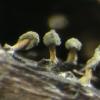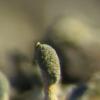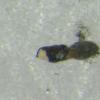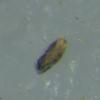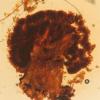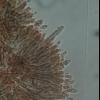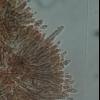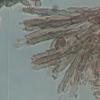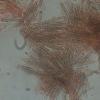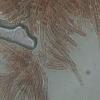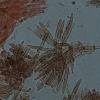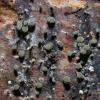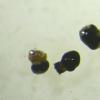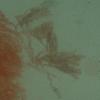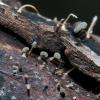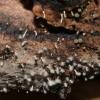
04-11-2025 09:07
Hello.A suspected Hymenoscyphus sprouting on a thi

04-11-2025 12:43
 Edvin Johannesen
Edvin Johannesen
Hi! One more found on old Populus tremula log in O

03-11-2025 21:34
 Edvin Johannesen
Edvin Johannesen
These tiny (0.4-0.5 mm diam.), whitish, short-stip

28-10-2025 15:37
Carl FarmerI'd be grateful for any suggestions for this strik

03-11-2025 16:30
 Hans-Otto Baral
Hans-Otto Baral
Hello I want to ask you if you have found this ye
 Hi, I am challanged with a fungus I found on decaying bark, about 0.5-1.0mm long. It has a yellowish-tobacco stipe, quite tough and sometimes developing a black sheath or just it becomes black at the base, supporting a reproductive structure which is irregularly round or ovate, covered in a greyish olive-green mass of spores. This is also quite tough and a cross section reveals a pale medulla and a dark green cortex.
Hi, I am challanged with a fungus I found on decaying bark, about 0.5-1.0mm long. It has a yellowish-tobacco stipe, quite tough and sometimes developing a black sheath or just it becomes black at the base, supporting a reproductive structure which is irregularly round or ovate, covered in a greyish olive-green mass of spores. This is also quite tough and a cross section reveals a pale medulla and a dark green cortex.Its when I examined the reproductive part under the microscope I got confused. in my limited knowledge I interpreted that the fungus is composed of a densely packed layer of tubes which are likely basidia but perhaps ascii, each forming forming ONE terminal spore. I don't know of any basidiomycete which is monosporous, while I wonder if ascomycota form spores this way since usually they are inside an ascus. The remaining alternative is some Myxo (size and habitat OK) but still I'm not sure there were no obvious signs of a plasmodium.
Well the what-so-called basidium is 16-19 x 5um, cylindrical with sinuated-irregular margins, while the spores are 7-8 x 3-3.5 in size, narowly lachrymoid with an acute-pointed end (attachment end) and with few small oil bodies, probably with a smooth surface.
See captions for further details
you can forget the idea of this being a myxomycetes. Myxos do not have septas. Some imperfect fungus perhaps...
Marja
I agree, it looks like an hyphomycete.
Good luck to find a name !
Alain

So is there a big possibility that this is not even an Asco? If you look closely at the 5th pic of the second post I think that those stuctures are clamp junction, and so, this would exclude ascomycetes as somewhere I read that Asco cannot have clamp junctions. Thanks alan , I need lots of luck - so let's check Hyphomycete !

Penicillium claviforme
Look here one before last photo:
http://www.tub-collection.com/pic.html

What I think I see is a Dematiaceous Hyphomycete with conidiogenous cells polyblastic, integrated maybe sympodial, denticulate.
un saludo
Angel

In fact, apart the lack of spores in chains, I was also concerned with the shape of the spores which in penicllium are almost always sugglobuar or globular, but this fungus have narrowly-lachrymoid spores. I take your suggestion and discard Penicillium. Any other suggestions are welcomed

I am still trying to identify this fungus, at least genus level. I have drawn a representative diagram of what I think I am seeing. See images.
I hope that the stipe structure can be regarded as a coremium
The best guess is somewhere within Stilbaceae (Stilbum, Briosia, Pycnostysanus, Stysanus, Coremium....)
In KOH the fruiting body turns black.

I've cultured on PDA, MEA and Czapek - growth very slow or almost nil.

Unfortunately, now I am running out of options. I think that I have checked all the 'important' genera of Stilbaceae, and I can't think of another Family for this synnematous ascomycete. (Tuberculariacea maybe?). I still have some specimens to share, and if someone is interested to check just email me your postal address on [marz @ nextgen .net .mt] (remove spaces) and I will send some material - as it can have a potential to be a new species to science from the M altese islands / Central Mediterranean. It is distantly related to Seifertia (=Briosia) azaleae a pathogen of Rhododendron.
Regards

